Campbell Hall (1950)
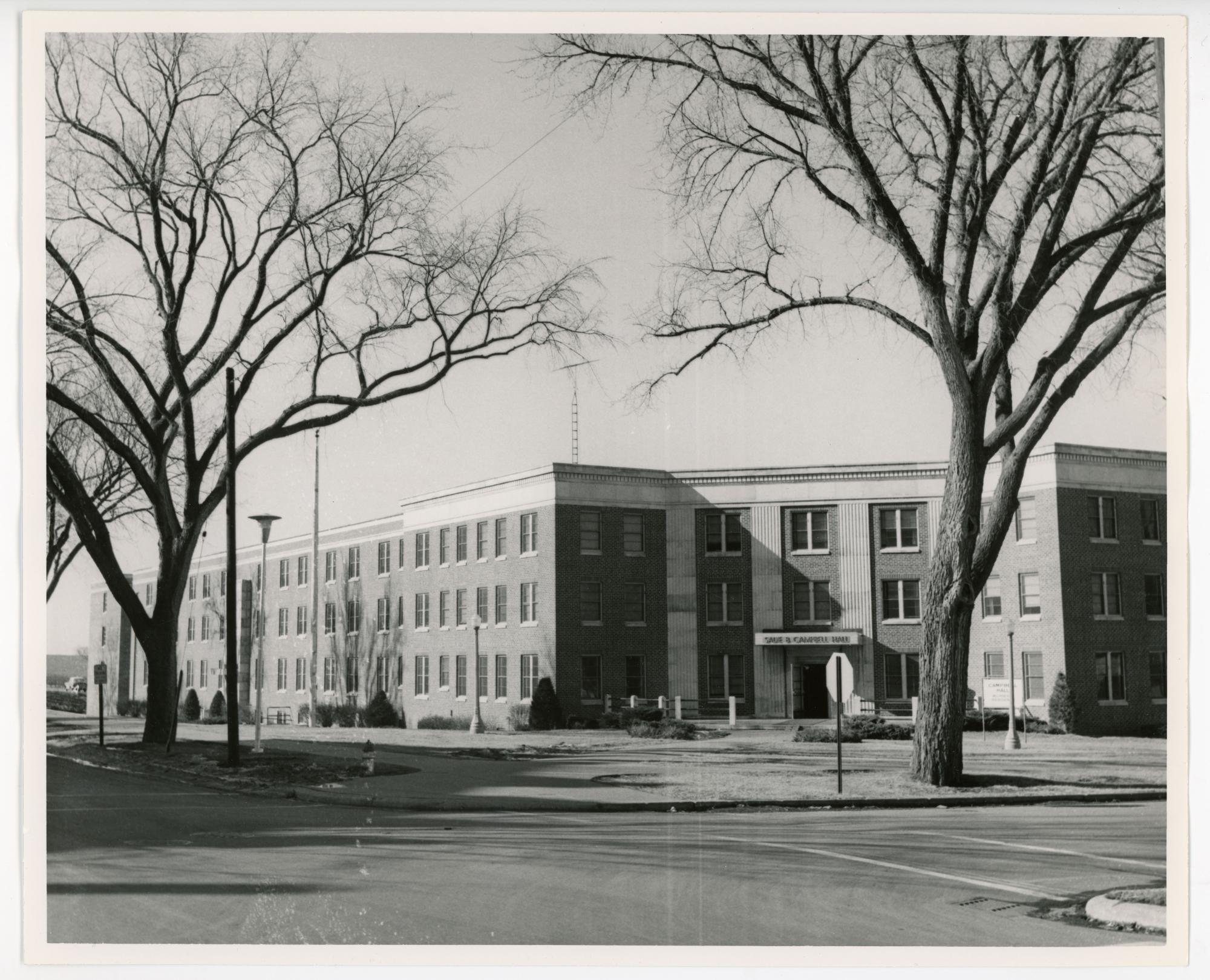
As World War II came to a close, President Malcolm Price knew that the postwar enrollment surge would bring a greater need for student housing at the Iowa State Teachers College. The first response was the construction of Sunset Village in 1946-1947. These military surplus metal-sided buildings were intended to provide temporary housing for about 144 returning veterans and their families. The second response resulted in an addition to the west end of Lawther Hall in 1948, which provided an additional 110 rooms for women.
In October 1948 the college purchased about twenty acres of land bounded roughly by 19th and 23rd Streets, and Merner Avenue and Hudson Road. The college initially planned to erect three buildings on this new land: a Student Health Center Building, a new laboratory school, and a new women's dormitory.

Changes in elementary teacher certification requirements made a new women's dormitory a necessity. In 1946, new elementary teachers needed only twelve weeks of college level teacher training. However, by 1952, new elementary teachers would need a full two years of college training. Women made up the overwhelming majority of those who sought elementary education training. Since they would be studying on campus for much longer periods of time, the college needed to provide more living quarters for them.
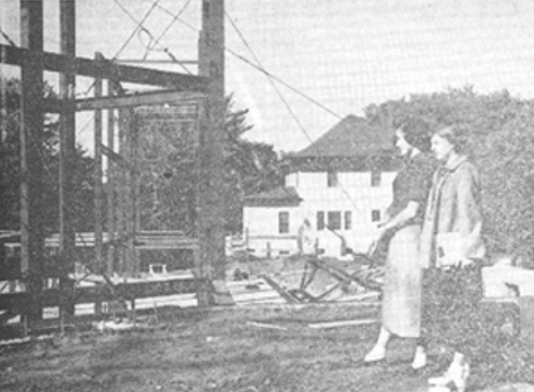
Postwar inflation delayed construction of the new women's dormitory. Bids were let several times before the college found a plan that it could afford and would meet its needs. In April 1950, Nemmers, Clark, and Spooner, an engineering and architectural company from Des Moines, provided plans for a $750,000 project that included accommodations for three hundred women.
The structure would be built on the corner of 23rd and Campus Streets. Its red brick and limestone style would be similar to that of Bartlett Hall and Lawther Hall, but it would have a flat roof. The building would include mostly double rooms with a few singles, two guest rooms, a library, three living rooms with fireplaces, and lower-level recreation and laundry facilities. Wildes Construction Company of Waterloo was the general contractor.
Construction was delayed due to difficulty in obtaining structural steel for the project. But the administration still hoped that the building would be ready for occupancy by fall 1951.
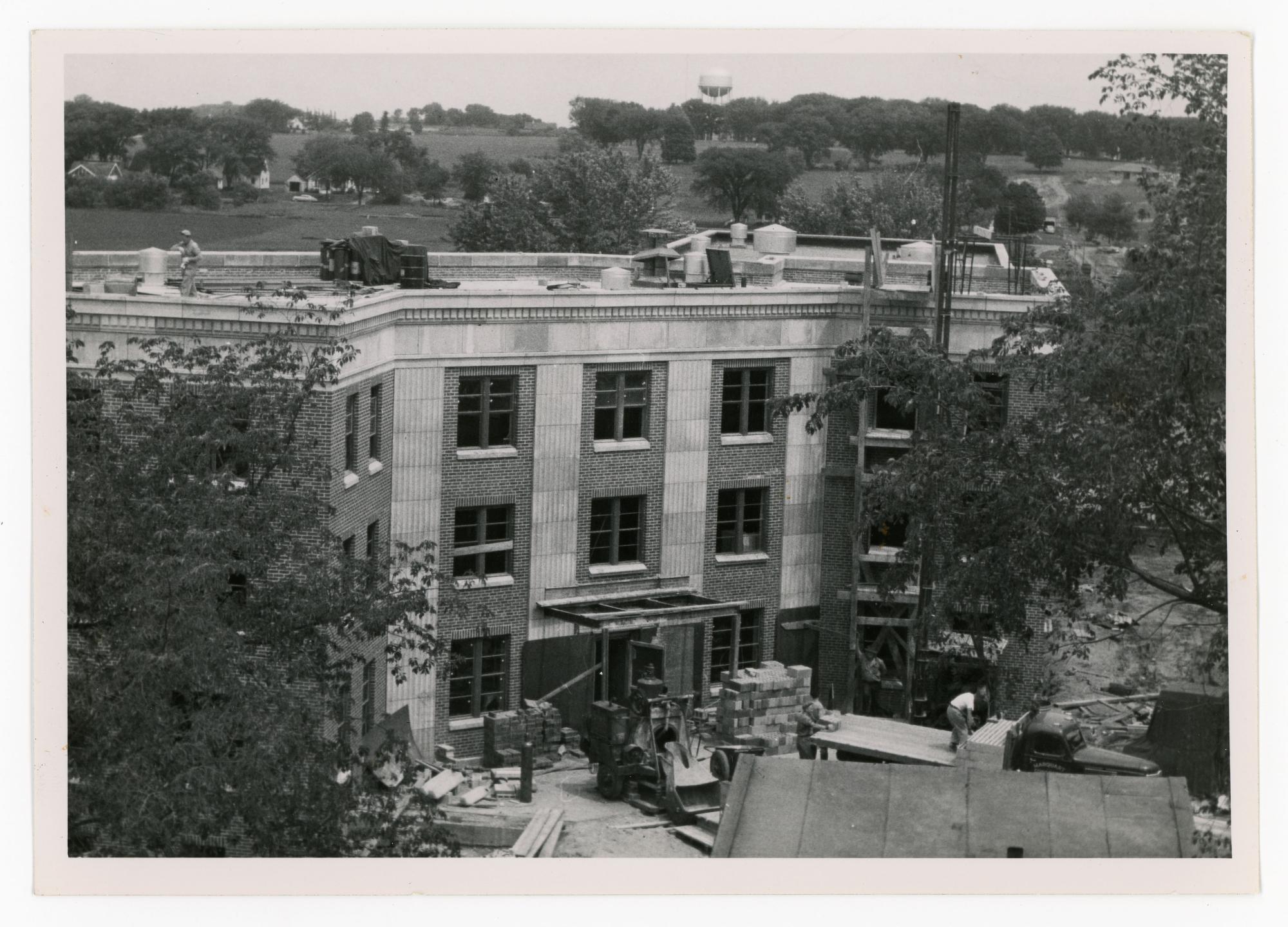
In March 1951, the Board of Education (now the Board of Regents) approved the name North Hall for the new building. Administrators and students planned a smooth transition to North Hall. In April 1951, following the election of corridor chairmen, students who would reside in North Hall began to develop the governance structure for the new building. In that same month the college accepted bids for furnishings.
As late as June 1951, plans seemed still to be on track. North Hall would be the home for junior and senior women. They would be housed two to a double room and one to a single room, a significant improvement over crowded Bartlett and Lawther Halls. There would be built-in drawers and wardrobe style closets. The light birch furniture would consist of two desks, two straight-back chairs, one easy chair, and single beds provided with the capability to be converted to bunk beds. The floor would be asphalt tile. And, probably most important to students, each room would have a telephone, the first such arrangement on the ISTC campus. The phone would likely result in an additional $3 charge for each room. North Hall would have its own kitchen and dining room, where breakfast and lunch would be served cafeteria style, and dinner would be served family style, with residents taking turns as servers.
But by August 1951, it was apparent that North Hall would not be ready for fall occupancy. January 1952 seemed to be the earliest possibility for occupying even a portion of the building. The steam tunnel, which would bring utilities to the building, had not even been started. Work on this portion of the project would extend well into the fall.

Women who had been eagerly anticipating life in the new dormitory were, instead, doubled up in Lawther Hall.
But they would organize and govern themselves as if they really were in their new dormitory. They would, essentially, be a dormitory within a dormitory. As Dean of Women Sadie Campbell said, "Our North Hall organization is living and working intact in the east end of Lawther Hall." Elizabeth Clarke and Jean Hinds were selected as the first North Hall directors. The women organized a full program of teas, pajama parties, recreational activities, and Christmas celebrations in the fall term. In October, Jo Welle, chair of the North Hall Customs and Traditions Committee, ran a contest to select hall songs: one sentimental and one rousing. Wanda Sievers and Helen Nielsen won the contest for the sentimental song. The teams of Bobbie Darling and Frankie Erickson and Marvella Koch and Marilyn Ross wrote the winning rousing songs. Also in preparation for their arrival in their new home, the Associated Women Students, the overall student governing body for women, considered the matter of smoking in the new dorm. In January 1952, AWS announced that women would be allowed to smoke in their rooms in North Hall when the new building was opened.
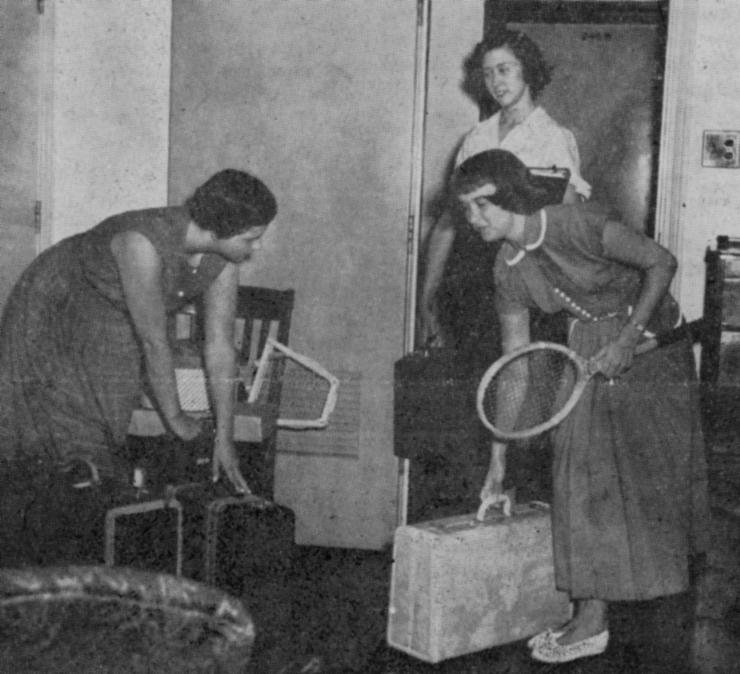
Some students were not especially pleased with the new women's dormitory. In November 1951 Loren Hannan wrote a letter to the College Eye in which he maintained that men had more serious housing needs than did women. Mr. Hannan was a resident of Stadium Hall, makeshift quarters for men that had been patched together in the campus football stadium, O. R. Latham Stadium. Five men lived in each of Stadium Hall's twenty-four 15 X 24 foot rooms. Mr. Hannan complained that conditions were very noisy and not at all conducive to study. He believed that women should continue to be doubled up in Lawther and Bartlett Halls, and that the new dormitory should be designated for men.
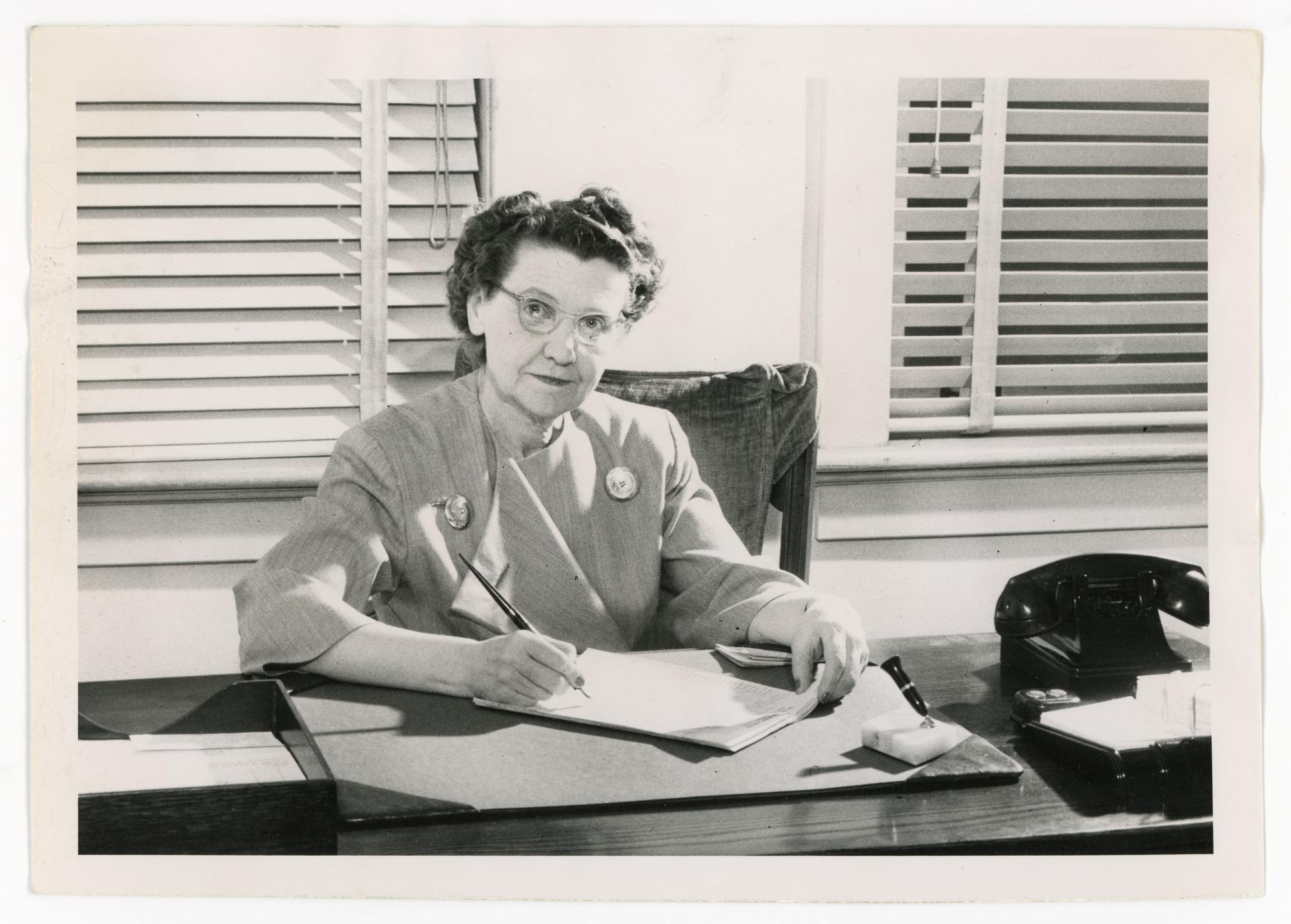
Construction continued to progress slowly. Ultimately, the North Hall women of 1951-1952 stayed in Lawther Hall for the whole school year. North Hall would not be ready for occupancy until fall 1952, a full year after the anticipated completion date. On May 23, 1952, the Board of Education passed a resolution changing the name of North Hall to Campbell Hall in honor of Sadie B. Campbell, who planned to retire on July 1, 1952, after twenty-three years as Dean of Women.
Miss Campbell was instrumental in developing and expanding the dormitory system and student government so that they better served the welfare of students. As Miss Campbell herself said about North Hall, "North Hall represents the realization of a dream in which the women of this campus will have the most unusual opportunities for progressive social growth as they continue their education from the freshman through the senior year."
Women finally did move into Campbell Hall, which had ended up costing about $1 million, in the fall 1952 term. They enjoyed their new home and continued to develop a full round of educational, social, and recreational activities, including a regular program of hosting monthly dinners for selected faculty members. In December 1954 Miss Campbell returned to campus for the formal dedication of Campbell Hall. While she had been involved in every detail of planning for the dormitory, she had moved to Denver, Colorado, after her retirement and had not really seen the new building "in action". Miss Campbell had a busy visit with many teas, receptions, brunches, and visits with old friends. During the dedication ceremony she accepted the portrait of herself that now hangs in Campbell Hall.

College enrollment continued to grow. In March 1962 the Board of Regents authorized negotiations with an architect for an addition to Campbell Hall. Architect Robert DeVoe of Cedar Falls began work in June 1962. In May 1963 the Regents accepted a bid of $950,000 for the addition, which would consist of accommodations for another two hundred women and additional dining facilities. Jens Oleson and Sons of Waterloo was the general contractor for the project. Authorities hoped that the dining facilities would be ready by fall 1963 and the additional dormitory space would be completed for fall 1964. Both plans went according to schedule. The dining facilities were complete for the fall 1963 term; some Lawther Hall women were assigned to eat at Campbell Hall, too. The dormitory addition, with a capacity now reported at 355 women, was occupied in the fall term of 1964. Campbell Hall held an open house for the new addition on October 11, 1964.
In 1966 plans were announced for a new dormitory, which would ultimately result in the Towers Complex. Initial plans called for a single high rise dormitory to be built just north of Campbell Hall with a connection to the Campbell Hall dining facilities.
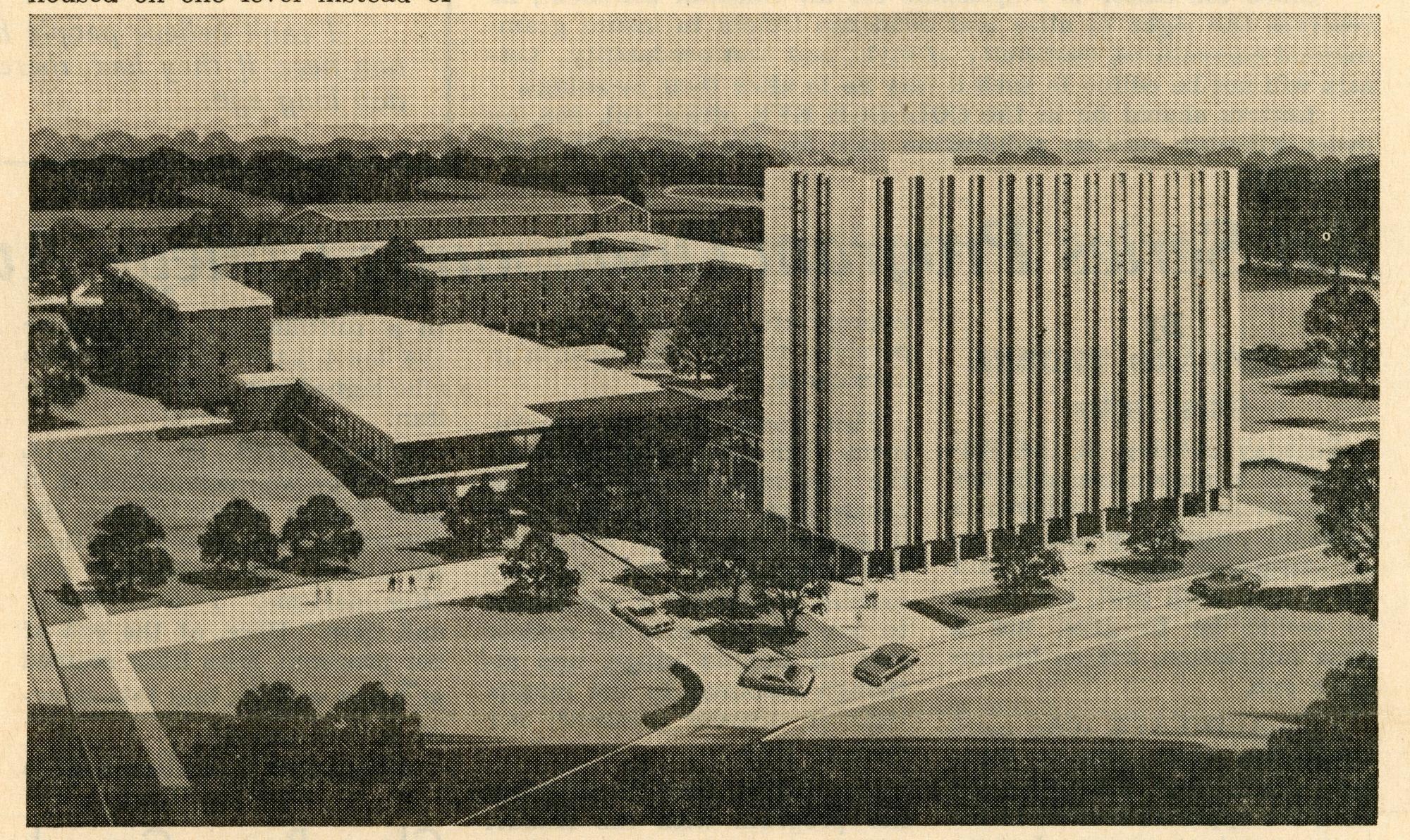
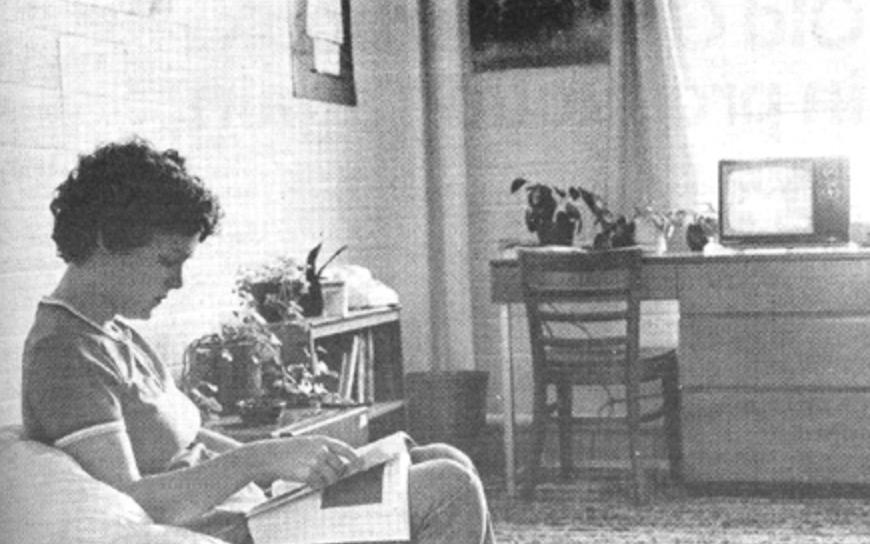
In March 1966 the Regents approved a $2.88 million project that would include a six hundred bed dormitory with dining facilities combined with those of Campbell Hall. But in October, with the Regents now planning for a two or three high rise dorm complex with its own dining and recreational facilities, the proposed connection with Campbell Hall was dropped.
In the 1970s Campbell Hall struggled with the issue of 24-hour visitation. Despite several hall votes very strongly in favor of the liberal visitation policy, 24-hour visitation was not approved until 1979. Issues also arose regarding the Campbell Hall dining center, which many residents seemed to hold in special affection for its homey atmosphere and high quality food.
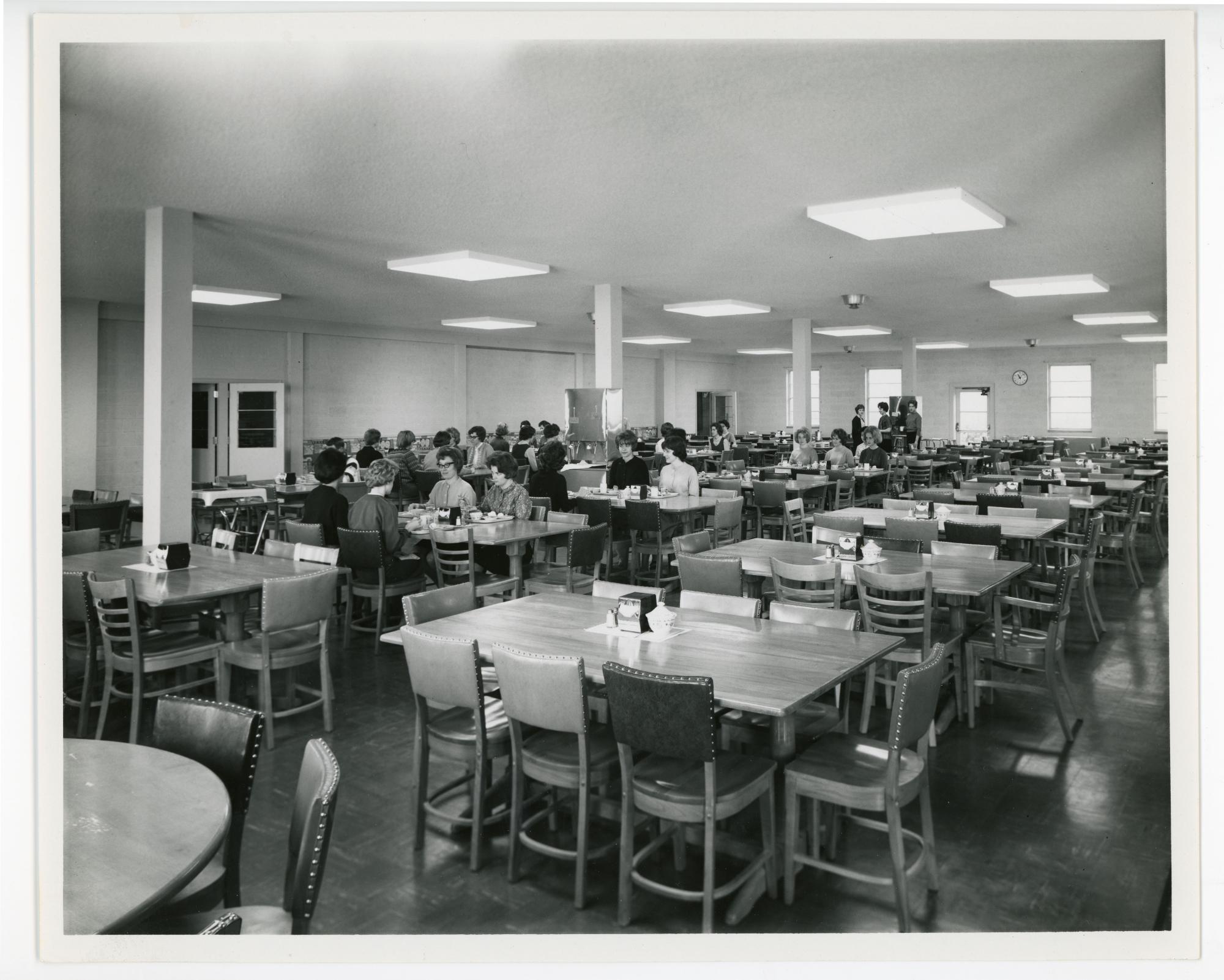
From time to time food service administrators proposed to close the center on weekends, due to the relatively small number of students who ate there during those times. But residents were unhappy at the prospect of leaving their own building and walking to other dining centers, where they believed they would encounter long lines. By 1999 there was talk of closing the Campbell Hall dining center completely. And, despite protests by some students, the dining center did close in the fall of 2000 and was converted into the campus bakery, which had formerly been located in Redeker Center. Redeker Center was also closed for remodeling in 2000-2001. Consequently, many dormitory residents experienced significant inconvenience during that time. In another sign of the times, Campbell Hall was designated a smoke-free building in the fall of 1997, forty-four years after women first received the privilege of smoking in their dormitory rooms.
But probably the biggest change in recent history occurred in the fall of 2000, when Campbell Hall was organized as a co-ed dormitory. The building was organized into fourteen houses, eight for women and six for men. Hall coordinator Jeanne Keyser reported, "Things are going very well. The houses are starting to pair up and plan events together."
Compiled by Library Assistant Susan Witthoft and edited by University Archivist Gerald L. Peterson, July 1996; substantially revised by Gerald L. Peterson, with scanning by Library Assistant Gail Briddle, September 2002; last updated, January 28, 2015 (GP).
